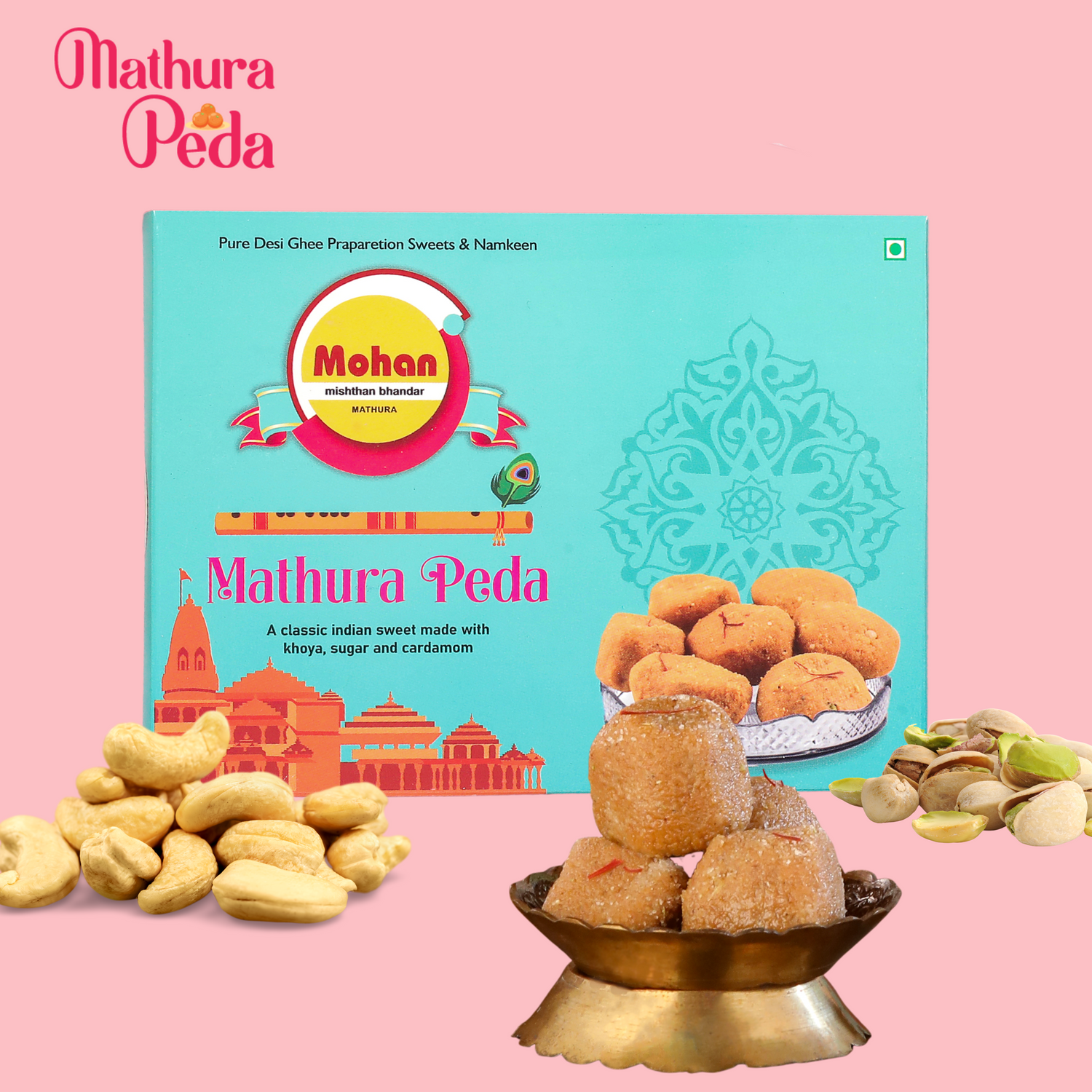Holi, the festival of colors, is one of the most vibrant and joyous celebrations in India. In Mathura, the birthplace of Lord Krishna, Holi is not just a festival but a grand cultural and spiritual event. Amidst the playful splashes of colors and devotional fervor, one sweet delicacy stands out—Mathura Peda. This iconic milk-based sweet is deeply intertwined with the traditions of Holi in Mathura and holds immense significance for devotees and visitors alike.
Mathura, being a land dedicated to Lord Krishna, sees an influx of devotees during Holi. Mathura peda is a popular prasad (offering) in temples, especially at the Shri Krishna Janmabhoomi Temple. The rich, melt-in-the-mouth sweet made from khoya (mawa), sugar, and cardamom is believed to be a favorite of Krishna, making it an essential part of the festival.
During Holi, Mathura’s streets are filled with an array of festive delicacies like gujiya, malpua, thandai, and, of course, the famous Mathura peda. This traditional sweet is distributed among family, friends, and guests, symbolizing love, joy, and togetherness. Lord Krishna’s childhood in Braj Bhoomi is full of tales about his love for dairy products, especially butter and sweets. Since Mathura peda is made with milk solids, it resonates with the cultural and religious essence of the land. This connection makes it a must-have treat during Holi celebrations.
The bustling markets of Mathura, particularly famous sweet shops like Mathura Peda. Tourists and devotees buy Mathura peda as a souvenir of their spiritual journey, taking home the rich flavors of Krishna’s land. Unlike some sweets that spoil quickly, Mathura peda has a long shelf life, making it ideal for gifting during Holi. Families pack boxes of peda to share with loved ones, further spreading the joy of the festival beyond Mathura’s borders.

